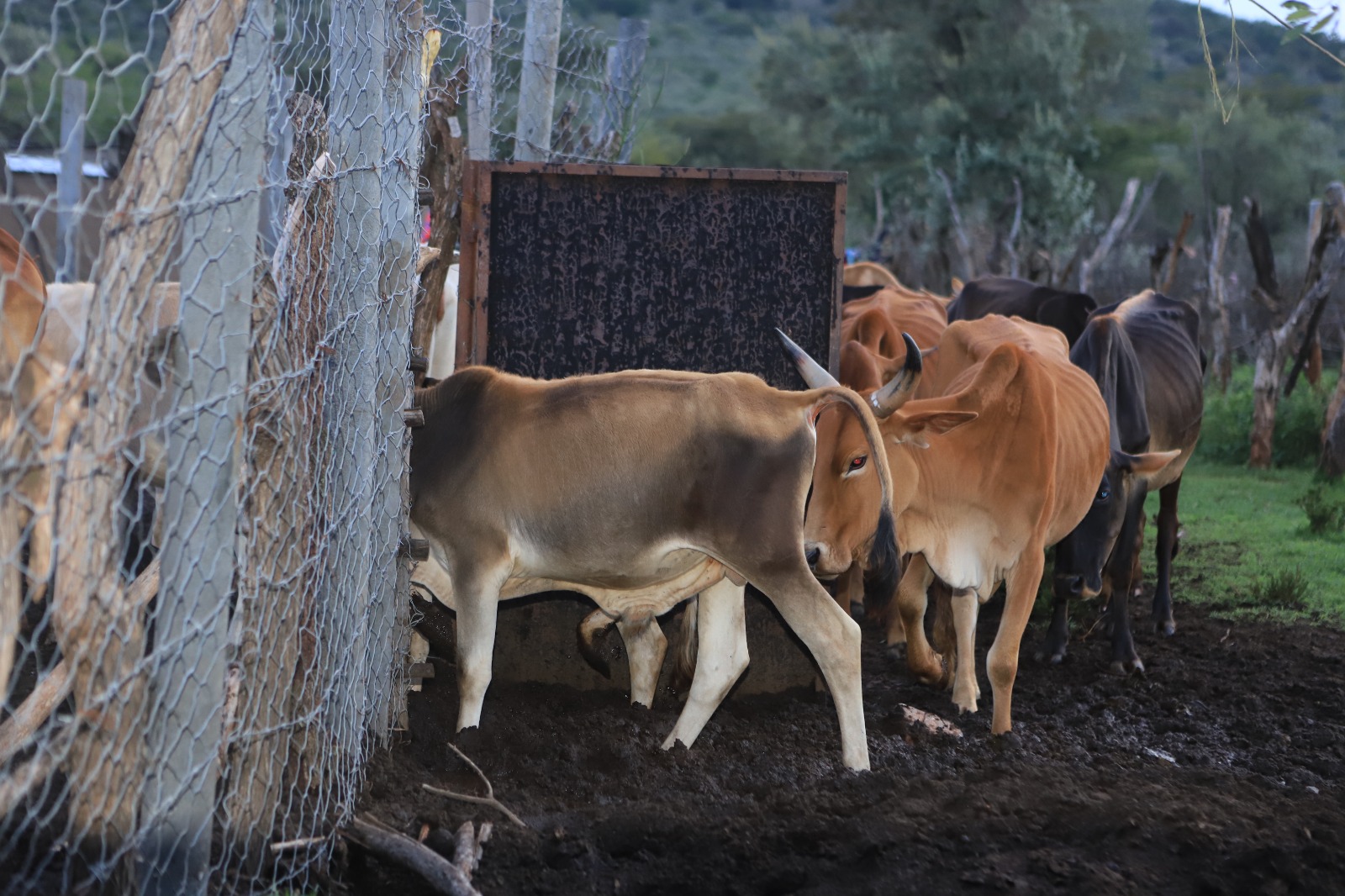Cases of human-wildlife conflicts, a struggle between people and animals, have been widespread in Kenya. They mostly manifest when the needs and behavior of wildlife impact negatively on humans or when humans negatively affect the needs of wildlife. And these incidents particularly occur in community conservation areas where people co-exist with wildlife.
In Narok County, we meet Luka Lontai, who narrates his first-hand experience with invading animals. He says wildlife especially lions, elephants, hyenas, and leopards have been raiding his farmlands wreaking havoc and leaving in their wake a trail of destruction. So far, he has lost an unprecedented number of livestock. The encounters, he says, have only left him counting innumerable losses.
Lontai who hails from Enkutoto Megwara in Narok County says most nights, for his family, have been without peace, given that they have to stand on guard and keep watch lest the animals kept in shelters, popular as bomas, be mauled by the marauding beasts.

The burden most times falls on men in homes because we cannot send our wives and children out in the dark. We mostly use torches to try and scare away the animals, but sometimes, this tactic proves ineffective if the animals, especially lions are already too close to the livestock. As the animals scamper away for safety, some instead run into the hungry jaws of the wild animals,” he says.
He, however, says the last two years, have been different. According to Lontai, the community’s fortunes changed as soon as they received predator-proof bomas courtesy of the Worldwide Fund for Nature Kenya (WWF-Kenya).
“Before we received the bomas, we incurred losses owing to our livestock being fed on. Lions especially would scare the cows into the nearby bushes and feed on them as we tried to herd the remaining livestock back in the midst of confusion and darkness. They are now contained and safe,” Lontai avers.
His wife, Nongokua says the bomas are a blessing because since they received the donation, human-wildlife conflict in their homes has reduced to almost nil, a total contrast from the past.
“When my husband used to go away for days to look for pasture, my children and I used to freeze in fear as the remaining livestock got attacked in the dead of night. Now, they are safe even when we are home alone,” she says jubilantly.
A predator-proof boma is constructed using recycled plastic poles that are surrounded by triple-twist chain links and barbed wire. A steel gate is installed to control livestock entry and exit. The boma is impenetrable for large carnivores as it is sealed all around.

Speaking to KBC Digital, Evans Sitati, the Mara Siana Conservancy Manager says due to the high number of wildlife in the conservancy which borders the Enkutoto Megwara area, predation is at an all-time high.
“The implementation of predator-proof bomas is an expensive affair, one boma costs about Ksh 15,000. In light of this, the conservancy has procured around 15 bomas which have been distributed to land owners whose bomas are adjacent to the conservancy,” Sitati says.
Sitati echoes Lontai’s sentiments, alluding to the fact that Megwara area is a high-conflict zone but with the predator-proof bomas, numbers of invasions have declined and there is new-found harmony between wildlife and humans.

WWF-Kenya Project Coordinator Mara Sub-Landscape, Kevin Gichangi, says over the years, his organization has been working closely with the Mara Siana Conservancy which is known to be very rich in wildlife, especially elephants.
As part of efforts aimed at mitigating human-wildlife conflict, Gichangi says his organization has been advocating the availability of ample space both for humans and wildlife.
“We have been rallying and supporting land owners to bring their land together to manage it sustainably for wildlife so that the ecosystem thrives as they also benefit from income-generating activities that will improve their livelihoods,” he says.
Gichangi says the main idea behind pooling land together is to increase space for wildlife which will eventually reduce conflict between people.
“One of the biggest threats is crop farming which we are trying to discourage because, after research, we discovered the most compatible land use for wildlife is sustainably keeping livestock by introducing grazing plans which mimic the herbivores’ grazing patterns,” he adds.
According to Gichangi, the grazing plans which are drawn up by the land users ensure that livestock is managed collectively which ultimately allows the land to regenerate.
Another way of mitigating the conflict, Gichangi says, is by use of ‘lion lights’ also known as solar-powered predator deterrent lights.
“The conservancy has a considerable amount of lions, but with the lion lights, communities are safe as they deter lions and by extension other predators.
How the Solar-Deterrent System Works
The Solar-Deterrent System during the day absorbs heat energy through the solar panel at the top which allows it to flash continuously all night long.
Predators have a night-time visual acuity, ten times that of humans, and the flashing lights render them temporarily blind. Their pupils are thus unable to determine whether it is day or night, and this deters predation because they can neither pinpoint a target nor calculate risks.

The battery lights have a three to four-year lifespan and are made to be resistant to elements of weather.
In the Mara, there were 427 human-wildlife conflict incidents that resulted in 1,210 livestock deaths and 282 livestock injuries, according to the WWF-Kenya Annual Report For the year ending 2022.
However, no conflict cases were reported in areas where predator-proof bomas and lion lights were installed.





